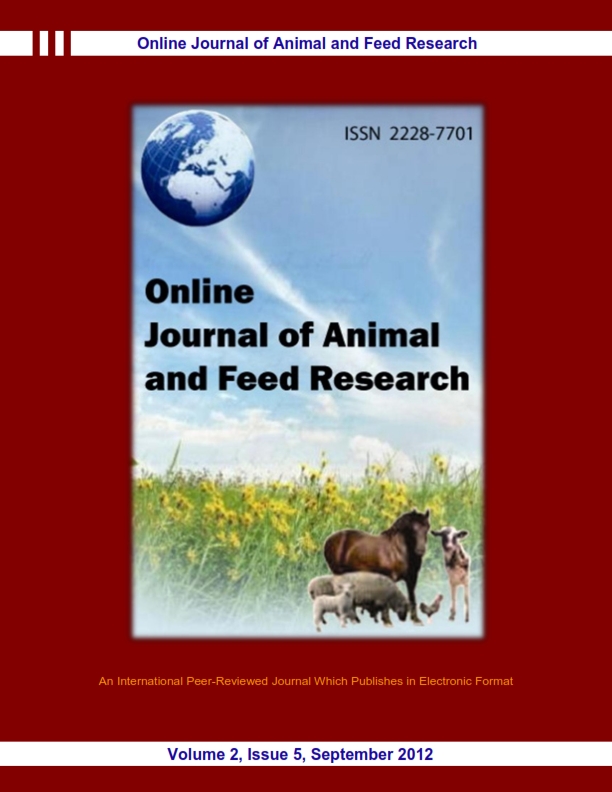|
Research Title/ Field
|
Article (Abstract)
|
Download
|
|
Nutritive value, for some important range species northern kordofan, sudan
|
Original Research, B74
Dawelbait E.M. and Ahmed M.M.
Online J. Anim. Feed Res., 2(5): 398-400, 2012.
ABSTRACT: This study was conducted in North Kordofan State in the year 2009. The objectives were to identify the nutritive value, for the rangelands prevailing in the region .To achieve the objectives field and laboratory works were done. The field work was for sample collection while the lab work include proximate chemical analysis according to (A.O.A.C, 1990), was done for some range plants and trees to identify the nutritional and mineral content. Data were analyzed using SPSS software. The results showed that CP (crude protein), CF (crude fiber), ash, E.E (Ether Extract) and NFS (Nitrogen Free Extract) were in the range from 6-10, 35-45, 7-10, 1.1-2.1 and 36.7-46.7% respectively. The chemical analysis for selected browse trees were CP5.1%, CF 31-33%, EE 0.4-0.9%, ash 7-8.1% and NFE 53-56.9%. Mineral contents ranged from 0.0144-0.075 ppm for P, 0.002-0.063 ppm for K and 1-2.9 ppm for Iodine. Based on the findings it can be concluded that rangelands of North Kordofan is not poor in the term of nutritive value but it suffers of mineral deficiency. The study recommends that water and dams should be made with optimum distribution to access the non-reachable rangeland because of water deficiency, also supplementary feeding is needed in the term of concentrates and minerals.
Key words: Rangelands, Crude Protein, Crude Fiber, Ash, Ether Extract and Nitrogen Free Extract
|
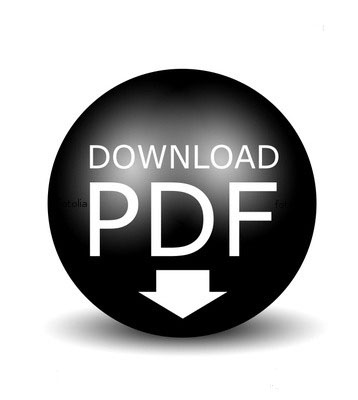 . .
.

|
|
Effect of dietary benzoic acid supplementation on growth performance and intestinal wall morphology of broilers 

|
Original Research, B75
Amaechi N. and Anueyiagu C.F.
Online J. Anim. Feed Res., 2(5): 400-404, 2012.
ABSTRACT: The research was conducted to determine the influence of benzoic acid on growth performance and intestinal wall morphology of broiler birds. The research was carried out using 120 day-old broilers divided into five (5) groups, each having 24 broiler birds, and eight (8) birds per replicate. The levels of inclusion of the benzoic acid was based on control 0%, Treatment 1 = 0.6%, Treatment 2 = 1.2%, Treatment 3 = 1.8% and Treatment 4 = 2.4%. After six weeks, 2 animals from each replicate were killed. The carcasses weights, the pH of the digester and organ proportions were determined. Result showed that the body weight gain of birds in Treatment 1 and Treatment 2 were the highest (T1=1.44kg, T2=1.76kg), but T2 had the best growth performance which was significantly different (P<0.05) in the final body weight of other birds in other treatments. The different segment of the gastro-intestinal tract had different pH concentration which differed significantly (P<0.05) between the control and the treatments. Benzoic acid supplementation improved (P< 0.05) duodenal and jejuna villous height. This study showed that feeding benzoic acid at 1.2% inclusion level in broiler feed improved weight gain and also suppressed some microbes, which compete with the host animal for nutrient, thereby improving the growth performance and gut health of broiler birds.
Key words: Organic acid supplementation, performance, intestinal wall morphology and broiler chickens.
|
 . .
.

|
|
Effect of season and harvesting method on chemical composition, predicted metabolizable energy and in vitro organic matter digestibilityof rotationally grazed tropical pastures

|
Original Research, B76
Hughes MP, Jennings PGA, MlamboV, Lallo CHO.
Online J. Anim. Feed Res., 2(5): 405-417, 2012.
ABSTRACT: The nutritive value of pastures is influenced by several factors. The objective of this study was to quantify the effects of season, and harvesting method on the nutritive value of rotationally grazed tropical pastures. Herbage was harvested at ground level (G-L) and by hand-plucking (H-P) during the dry, intermediate and wet seasons from 5 dairy and 2 beef farms. Nutritive value was evaluated by quantifying crude protein (CP), neutral detergent fiber (NDF), acid detergent fiber (ADF), acid detergent lignin (ADL), predicted metabolizable energy (ME) and 12, 24 and 48 h in vitro organic matter digestibility (IVOMD). Season and harvesting method significantly (P < 0.05) affected chemical composition on all farms. Crude protein and ME content were 36 % and 27 % higher in H-P herbage than G-L herbage, respectively. Crude protein concentration of G-L and H-P harvested herbage was highest in the wet season. ME increased from dry to intermediate season then declined in the wet season. H-P herbage NDF, ADF and ADL was 9.6 %, 9.9 % and 9.7 %, respectively, lower than G-L herbage across all farms and seasons. ADF (351 – 403 g/kg DM) and ADL (43.0 - 90.3g/kg DM) contents were lowest in the wet season. Approximately 60 – 65 % of final IVOMD for G-L and H-P herbage occurred within 12 h post incubation across all farms. The 12 h IVOMD of H-P herbage was 17 % – 25 % higher than G-L harvested herbage. The 12, 24 and 48 h IVOMD of both H-P and G-L herbage were highest in the intermediate season. Dry and wet season IVOMD did not differ (P > 0.05) on most farms. It is concluded that H-P herbage is of superior quality to herbage cut at ground level. This indicates that rotational grazing is the most suitable system of feeding unless sward structure is augmented by mowing to reduce accumulation of residual dry matter. The nutritive value of these tropical pastures was found to be highest during the intermediate season and lowest in the dry season.
Key words: Harvesting Method, Season, Nutritive Value, Tropical Pastures
|

.
.

|
|
Haematological indices of captive black neck ostriches
|
Original Research, B77
Mohamed Ahmed F.A., Yousif R.A., EL Hessan, Mohmmed Salih RR.
Online J. Anim. Feed Res., 2(5): 418-421, 2012.
ABSTRACT: This study was conducted at Sudan University of Science and Technology College of Veterinary Medicine and Animal Production Department of fisheries science and wildlife in June 2011 to determine hematological values of Black Neck Ostrich Struthio Camelus massaicus collected from El Safa farm North Khartoum. Values of some hematological parameters of 14 Black Neck Ostrich 7 male and 7 female age from 3-4 year, and 70–75 kg in weight were examined to determine the mean values obtained for White Blood cells Count (WBC), Erythrocytes Count (RBC), Hemoglobin Concentration Rates (Hb), Packed Cell Volume (PCV), Mean Corpuscular Volume (MCV/cl) and Erythrocytes Sedimentation Rate (ESR). The result of this study show that there are no significant different in all blood values between samples collected from male and female at p (P<0.05), expect in Red Blood Cells (RBC) there is significant different at (P<0.05). The main target of this study is to comparison between hematological values of Black Neck Ostrich in both male and female.
Key words: Hematological, Ostrich, Parameters, Captivity, Birds
|

.

|
|
Feedlot performance and carcass characteristics of Sudan Baggara bulls fed varying levels of pelleted sorghum straw

|
Original Research, B78
Babiker AA, Babiker IA, Abdelhadi OMA, Elemam MB and Salih AM.
Online J. Anim. Feed Res., 2(5): 422-426, 2012.
ABSTRACT: Thirty six entire Sudan Baggara bulls of an average weight 201.53±6.85 kg and 2.5 year age were divided into four groups of nine animals each. These bulls were fed varying levels of pelleted sorghum straw (roughage portion) with a concentrate molasses based mash diet to examine the effect of nutrition on their feedlot performance and carcass characteristics. Results showed that, feeding of varying levels sorghum straw did not affect dry matter intake (DMI), average daily gain (ADG) and feed conversion ratio (FCR). Carcass characteristics and meat quality attributes were not affected by the treatments, but showed variable results.
Key words: Bulls, Pelleting, Molasses, Feedlot, Carcass Characteristics
|
 . .

|
|
Prediction of live body weight from linear body measurements of west African long-legged and west African dwarf sheep in northern Ghana


|
Original Research, B79
Birteeb P.T. and Ozoje M.O.
Online J. Anim. Feed Res., 2(5): 427*434, 2012.
ABSTRACT: The knowledge of live weight of animals is so important in the livestock production and marketing practices that this study was undertaken to develop models for predicting the weight of sheep at market ages. Data comprising of the weight and linear body measurements were collected on the West African Long-Legged (WALL) and the West African Dwarf (WAD) sheep from Pong-Tamale and subjected to regression analyses. The results revealed that heart girth was the best predictor of liveweight, with prediction accuracies of 92.36% for two years old WALL sheep and 81.20% for one year old WAD sheep, while wither height was the second most important trait in liveweight prediction, in simple linear models. The quadratic models of the single-trait models also had heart girth as the best predictor of liveweight, recording 92.92% accuracy for one year old WALL sheep. Only two traits were mostly required for weight estimation in the multiple-trait models, and the best model was obtained from two years old WALL where heart girth and body length accounted for about 95.53% in prediction accuracy. The multiple-trait quadratic models were generally better in liveweight prediction compared to the respective linear models. Clearly, weight estimation was more accurate among the WALL than the WAD sheep, and also among the younger sheep regardless of the breed. The variations in the models suggest that breed and age of sheep had influence on the type of models required to predict their live body weight.
Key words: Estimation, Linear models, Livestock, Liveweight, Multiple regression, Quadratic model
|

.
.

|
|
Factors affecting milk production traits of Saanen goat raised under Sudan - Semi Arid conditions
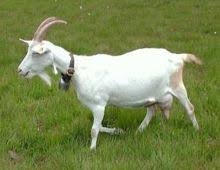
|
Original Research, B80
Ishag IA., Abdalla SA. and Ahmed M-K.A.
Online J. Anim. Feed Res., 2(5): 435-438, 2012.
ABSTRACT: The aim of this study is to investigate the genetic and environmental factors affecting milk production characteristics of Saanen goats raised under Sudan conditions. It also aims at estimating heritabilities, phenotypic, genetic and environmental correlations among milk production traits. Means for total milk yield, lactation length and daily milk were 340.78±11.35 kg, 203.99±7.66 days and 1.50±0.05 kg, respectively. The season, year of calving and parity number had significant influence on total milk yield and daily milk yield. The lactation length was significantly (P<0.05) affected by season, year of kidding and origin of birth, and was insignificantly (P>0.05) influenced by parity number. The origin of birth insignificantly affected total milk yield and daily milk yield. The study concludes that the Saanen breed can effectively raise milk production in the state.
Key words: Milk yield, Lactation length, Heritability, Daily milk yield, Goats.
|

.

|
Carcass characteristics of desert sheep under range conditions in north Kordofan state, Sudan
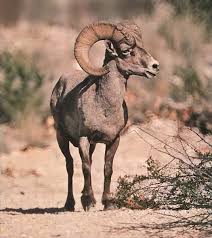 |
Original Research, B81
Tibin MAM, Bushara I, Eemam MB, Tibin IM and Jadalla JB.
Online J. Anim. Feed Res., 2(5): 439-444, 2012.
ABSTRACT: This experiment was conducted to study the performance, carcass characteristics and meat quality attributes of desert sheep raised under range conditions around El Nuhood. Thirty desert sheep (15 males and 15 females) of almost the same age (about 8 months) were used in a 16 weeks study period. The sheep were randomly allocated to three groups (treatments) of ten animals (5 males and 5 females). The three groups were allowed to graze on natural range grasses at night only and were kept under shade during the day from 7:00 am to 6:00 pm. The first group was allowed water every 2-3 days and was considered as control. The second group was allowed access to water daily. The third group was allowed daily access to water and received concentrates supplement. At the end of the experimental period, eighteen animals (nine males and nine females) were randomly taken, weighed and slaughtered to study the carcass characteristics. The results included that were significant (P<0.05) differences among the treatment groups with regard to the warm carcass, cold carcass and empty body weight. There were significant (P<0.05) differences between females and males of the three treatments in slaughter weight, warm carcass weight and cold carcass weight. Males obtained higher weights than females. The dressing percentage on the basis of warm carcass and cold carcass was significantly (P<0.05) different in the three treatments. The gut fill expressed as a percentage of empty body weight was significantly (P<0.05) different among the three treatments. These results concluded that management strategy which involves shorter watering intervals and feed supplementation will probably reflect positively on the performance, carcass characteristic of Hamari sheep under range conditions.
Key words: Dessert sheep, Performance, Carcass characteristic, Poncentrate ration, Sudan
|

.
.

|
|
Effect of feeding duration on performance and carcass characteristics of growing pigs

|
Original Research, B82
Njoku CP, Aina ABJ, Sogunle OM, Idowu OMO and Osofowora A
Online J. Anim. Feed Res., 2(5): 445-449, 2012.
ABSTRACT: A total of 36 Large White weaner male pigs of 8 weeks old were allotted to two groups (ad libitum feeding for 3 months and 80% ad libitum feeding for 5 months) in a Randomized Completely Design, to evaluate the effect of feeding duration on performance and carcass characteristics of growing pigs Each group consists of 18 pigs with initial average weight of 9.67±0.26 and was further replicated into 3 with 6 pigs per replicate. Data were collected on weekly basis and carcass characteristics were done at the end of 3rd and 5th months of feeding. Feed duration had significant (P<0.05) influence on final body weight, daily weight gain, Daily feed intake, water consumption and daily cost of feeding with higher values (54.17 kg, 349.42 g, 1.63 kg, 5.05 litres and N74.72), respectively recorded for pigs fed 80% ad libitum for 5 months. Higher values of bled weight (46. 78 kg) and carcass weight (35.44 kg) were noted for pigs fed 80% ad libitum for 5 months. Pigs fed 80% ad libitum for 5 months had higher value in head (12.42%), ham (14.40%), shoulder (13.92%) and feet (2.73%) weights compared to values documented for pigs fed ad libitum for 3 months. Better values for back fat thickness (0.43 cm) and fat-free index (49.69) were obtained among the pigs fed ad libitum for 3 months. Feeding duration greatly influenced performance and carcass parameters and should be used in improving the quality of carcass.
Key words: Feeding Duration, Ad Libitum, Pig, Performance, Carcass Characteristics
|
 . .
.

|
|
Influence of the probiotic, RE 3 on nutritional performance, hematological, immune status and carcass characteristics of rabbit reared under tropical conditions
.
.
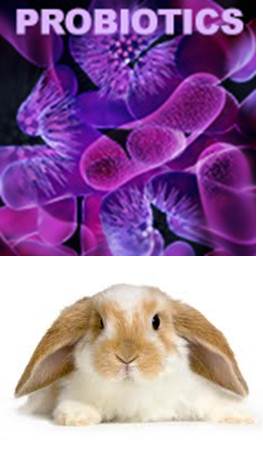
|
Original Research, B83
Wallace P.A., Osei D.Y., Aseidu P., Amoah, K.O. Asafu-Adjaye A.
Online J. Anim. Feed Res., 2(5): 450-456, 2012.
ABSTRACT: Thirty-six heterogenous population of California White, New Zealand White and Chinchilla weaner cross-bred rabbits of mean weight of 550 g were randomly assigned to four treatments of nine animals per treatment. The study was structured in such a way that there were two controls i. e. To- (treatment group without any additive in the basal diet) and To+ (treatment group treated with coccidiostat prior to commencement of feeding trial and fed the basal diet). The test treatment groups consisted of T1 (supplemented with 1.0 ml RE 3 per kg feed) and T2 (supplemented with 1.5 ml RE 3 per kg feed). The feeding trial lasted for a period of four months after which nutritional indices, hematological, immune function as well as carcass characteristics of the rabbits were assessed. The results of the lymphoid organ and indices showed that all the rabbits had similar immune response regardless of treatment. That was to imply that the immune function and status of all the rabbits seemed to be at the same level regardless of the presence or absence of RE 3. Furthermore, RE 3 neither influenced the growth nor the feed intake while feed conversion efficiency of rabbits fed 1.0 ml RE 3 per kg feed (T1) demonstrated significant (P<0.05) improvement. Rabbits fed treatment T1 also showed higher significant (P<0.05) serum levels of white blood cells and lymphocytes compared to those fed the other treatments. Also, RE 3 as a probiotic did not influence live weight, full stomach, full gastrointestinal and carcass length. It, however, caused significant (P<0.05) changes in the warm and chilled dress weights relative to all the others fed the other treatments.
Key words: Rabbit, Probiotic, Immune status, Hematology, Carcass, Nutritional profile, Tropical conditions
|

.
.
 |
|
|
|
|
|
|
|
|
|
|
|
|
|
|
|
|
|
|
|
|
|
|
|
|
|
|
|
|
|
|
